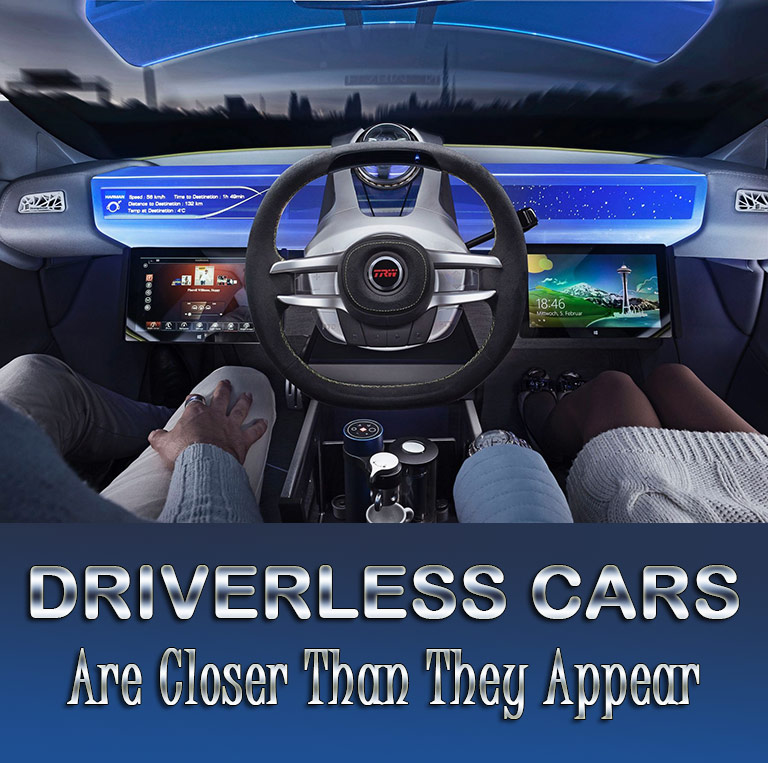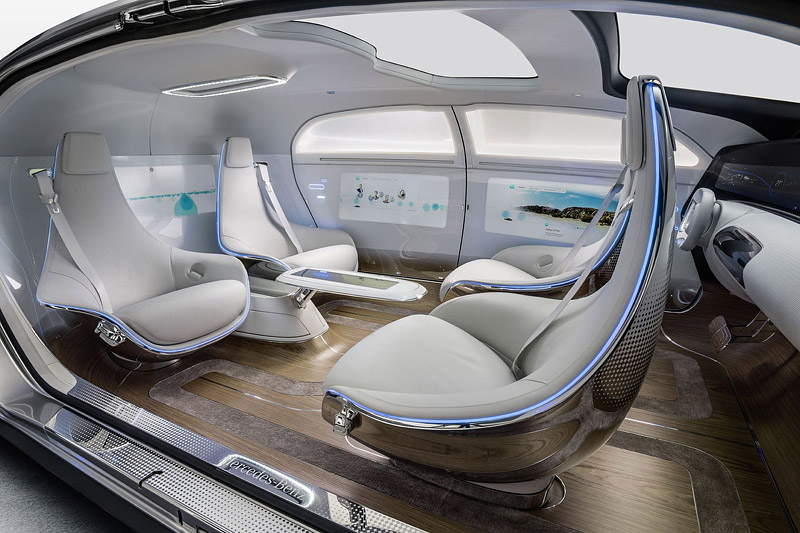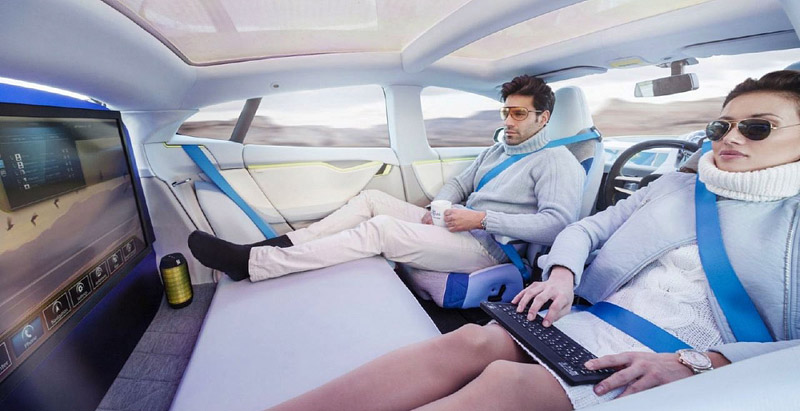
If you don’t live near an eerily utopian internet company headquarters — or in Detroit — chances are you haven’t seen a self-driving car in the wild. But everyone from the CEO of Ford to Elon Musk insists autonomous vehicles will be in regular use by 2020, a mere three and a half years from now.
The technology to build a truly autonomous vehicle already exists, at least according to this technology’s most vocal adherents. So why, then, are driverless cars still so rare?
Laws, as it turns out, are to blame. Before regular people get to call shotgun on a robo-ride, driverless-car supporters will have to convince lawmakers across the country that autonomous vehicles are safe and reliable. Autonomous-vehicle regulation is a state-by-state issue, and only eight states — plus the District of Columbia — currently have driverless-car laws on the books, according to the National Conference of State Legislatures.
States have largely been left to fend for themselves in drafting autonomous driving laws. The U.S. National Highway Traffic Safety Administration has vowed to draft a list of recommended policies for states by July, but (surprise!) the feds are notoriously slow in regulating emerging technologies. (We’re still waiting for the Federal Aviation Administration to decide how it wants to control commercial drones.) And ultimately, administration’s guidelines won’t be binding.
“Under existing law, the federal government regulates motor vehicle design, and the states regulate driving and noncommercial drivers,” says Bryant Walker Smith, an assistant professor of at the University of South Carolina who studies driverless cars. “The challenge here is you have the vehicle becoming the driver in many ways. That muddies this division of roles between the federal government and the state government.”

In other words, states are likely to remain in the driver’s seat when it comes to autonomous-vehicle laws for the near future. We’ll all be subject to a confusing patchwork of regulations that make the vehicles restricted to carefully controlled tests in some states and available to anyone with a valid license in others. Here’s a handy guide to understanding where driverless cars are revving up first and where they’re they still need a jump-start — beginning with the skeptics.
The NIMBYs
Good news: No state has issued an outright ban on driverless cars, but some older laws prevent the practical implementation of the technology. Take New York, for instance. The state has a 1971 law requiring drivers keep one hand on the wheel while driving, severely hampering any chill time a person might enjoy while in an autonomous car. There’s currently an effort in the state legislature to update the statute, but some lawmakers are wary. “Show me how it is going to work at Second Ave. and 60th Street at rush hour and then I might support legislative change for driverless cars,” state Sen. Liz Krueger told the New York Daily News
The Driverless Cars Cautious Studiers
Before granting a robot the legal authority to control a 3,000-pound death machine, it makes sense to do some homework, right? Several states have authorized various government agencies to study autonomous cars and their potential impact. Other states are just trying to define the word “autonomous,” as self-driving cars exist on a sliding scale of automation. While such laws are supposed to expedite the process for safely introducing driverless cars, they may actually slow the implementation of the technology. For instance, while the state is more confident about driverless cars, following a study, the California DMV issued proposed regulations in late 2015 that were more restrictive than what driverless-car advocates had expected.
Where this regulation has been passed: North Dakota, Utah
Where it’s being considered: Illinois, Louisiana, North Carolina
The Testers
A few states are now letting driverless cars on public roads, but only as part of carefully controlled tests. And there’s a key point of contention: Some of these new laws still require a human driver to be in the driver’s seat, ready to act if something goes wrong with the vehicle. Google wants to build self-driving cars that don’t have brake pedals or steering wheels. The company believes the technology works best when people can’t take over.
Where this regulation has been passed: California, Nevada, Tennessee, the District of Columbia, Arizona
Where it’s being considered: Massachusetts, New Jersey, New York, Pennsylvania, Rhode Island
The Trailblazers
“I’m living in a world with actual driverless cars, and we in here talkin’ about practice.” Florida Gov. Rick Scott (probably) said this as he signed legislation making his state the first in the nation to move past the testing phase and allow anyone with a valid driver’s license to operate an autonomous car.

Studies and closed tests are for nerds; Floridians want to feel the wind caress their faces as a computer program hurtles them down a highway at 70 miles per hour. Florida (which has been testing and studying driverless cars for years) is betting that declaring open season for the new technology will attract companies eager to deploy their newest toys in more-varied environments. Expect many of the triumphs and tribulations of early driverless-car tech to play out in the Sunshine State.
Where this regulation has been passed: Florida (Florida would.)
Where it’s being considered: Michigan
The Nondeciders
The vast majority of states don’t have driverless-car laws on the books, either because early bills have died in state legislatures or lawmakers are taking a wait-and-see approach. But just because a state doesn’t have a law allowing driverless cars it doesn’t mean the vehicles are explicitly banned. I mean, who could imagine a fast-growing tech company using a regulatory void to quickly bring legally ambiguous technology to a new market against the will of lawmakers and transportation officials? *thinking emoji*
“Uber has taken a very aggressive approach and an aggressive interpretation to existing law as it applies to taxis,” Smith says. “ An analogous approach would take a very flexible reading of existing law and might conclude that no legislation was necessary.” He says Tesla, which has side-eyed car dealership laws for years, could take a similar tack.
In fact, we’re already seeing Google use this strategy. Texas has passed no autonomous-car laws, and that’s the way Google likes it. The company is currently testing its vehicles in Austin with the backing of the city’s mayor, who gets his talking points on the topic from Google lobbyists.
The Blessed State Where You Can Finally Text While Your Car Drives Itself
The real reason we all want driverless cars isn’t to reduce traffic fatalities, shorten commute times, or curb pollution: It’s so we can get on our phones middrive and finally text without cops breathing down our necks.

Nevada’s state legislature gets this, so it introduced a provision in a 2011 texting-while-driving law that declares it totally cool to use your phone in the car so long as the vehicle is in autonomous mode (you’ll remember, Nevada is a driverless-car tester). No state has yet to approve drinking and autonomous driving, though.





Leave a Reply